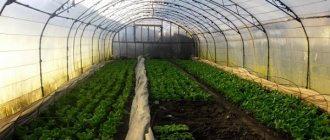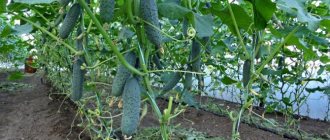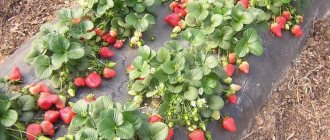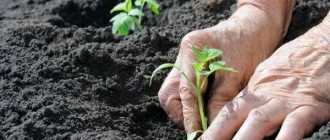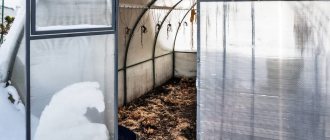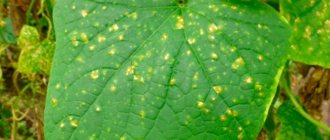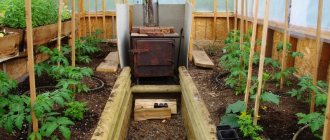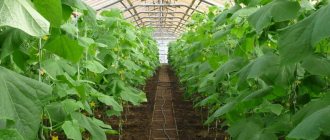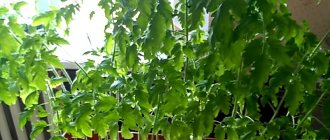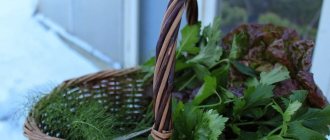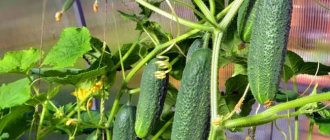What could be better than fresh homemade cucumbers on a fine January day? Growing this vegetable in winter is not difficult; avid gardeners have been doing this for a long time. The main thing is to provide the sprouts with space and sufficient heat. In addition, in order to reap a generous harvest, you need to choose the right varieties and know all the subtleties of how to grow cucumbers in winter. As always, the best secrets of summer residents are only on the Agronom.guru portal.
Homemade cucumbers in winter are the best way to provide the body with healthy fiber
Ways to grow cucumbers in winter
Cucumbers can be grown in winter on an insulated balcony, windowsill, or in a heated greenhouse.
Cucumbers on the windowsill in winter - a method for beginners
Growing cucumbers on a windowsill will not be difficult, even for inexperienced gardeners, since this crop grows quickly, is easy to care for, and can produce several harvests. In order to provide yourself with homemade cucumbers for the entire cold season, it is better to sow seeds in several stages:
- to get a harvest for the New Year, sowing begins in the first half of October;
- if you plant in the first half of December, you can enjoy the healthy vegetable already in February;
- If the goal is to grow by March 8, then sowing should be done in early January.
It’s quite possible to grow lightly salted cucumbers for the New Year’s table if you carefully read the recommendations of our portal
Technology for growing greenhouse cucumbers in winter
Before you start planting greens in a greenhouse, you must first learn about the difficulties that may be encountered during cultivation:
- Dry air due to greenhouse heating . Cucumbers love moisture very much, so care will need to be taken to maintain the required humidity. To do this, install containers with water in the greenhouse and regularly spray the plants.
- You also need to maintain optimal air temperature . Cucumbers cannot be grown at temperatures below +10°C, as this will not give positive results. The best temperature for fruit formation is from +22°C to +25°C.
- The disadvantage of daylight hours is that additional lighting is required in the morning, and in cloudy weather throughout the day.
Option for additional lighting of a winter greenhouse
How to help a plant with healthy feeding
At the beginning of growth, when 2-3 true leaves appear, the plant is “treated” with nitrogen fertilizer. Next, mineral fertilizers and vermicompost are alternated every two weeks. The cucumbers themselves will tell you what to feed the plants on the windowsill.
- If growth has stopped, water with urea.
- If the leaves turn yellow, use fertilizer with potassium or ash.
- Phosphorus promotes root development, which should be limited from the beginning of flowering.
To avoid diseases, the leaves are sprayed with a solution of Fitosporin.
Important! By the way, you should spray the leaves with settled water regularly, every morning... ✍
Cucumbers for balconies and windowsills, which varieties are suitable
In order to grow cucumbers in an apartment, you need to choose the right variety. For winter sowing, it is better to give preference to hybrids that bear fruit well and are less demanding on growing conditions. These varieties include the following.
Courage. Ultra-early ripening period, from germination to harvest - 36 days. Advantages: good fruiting, large fruits.
Shchedrik . Ripening occurs 40 days after planting. Each node produces about 7 fruits. When grown on a windowsill, up to 25 fruits can be removed from a bush.
Khotorok . Ultra early ripening variety. The harvest can be harvested a month after planting. Zelentsy have a length of 10 cm, black thorns and good taste.
Crunchy. Late ripening variety. When grown at home, up to 40 fruits can be collected from one bush. The variety is vigorous and requires a lot of space to grow well.
Masha. Early ripening variety. The bush is dense, producing from 5 to 7 elongated fruits at each node.
Prestige . An early ripening variety with excellent taste. Advantages: fruit ripening occurs unevenly, therefore, the harvest can be harvested within a month.
To grow cucumbers at home, you can choose another variety you like, the main thing is that it is early ripening and self-pollinating.
When choosing a variety, it is necessary to take into account the type of flower and the height of the vine.
To grow cucumbers on a windowsill, you should give preference to pollinated varieties.
Russian winter
The variety was bred in 2013, based on the Klin plant varieties, famous since the times of Tsarist Russia for their increased resistance to disease.
They have remarkable qualities characteristic of the main variety:
- shade tolerance;
- low branching;
- good product and taste qualities.
Unlike other varieties, it has pimply fruits with faint whitish stripes.
Cucumber varieties for a heated greenhouse
In order to enjoy gherkins all winter, one greenhouse will not be enough. Choosing a variety is the main step in obtaining a vitamin delicacy. Suitable for planting in a greenhouse:
- self-pollinating varieties;
- unpretentious and disease resistant;
- shade-tolerant varieties.
If the selected variety is not self-pollinating, then artificial pollination will have to be carried out.
These include the following varieties.
Cupid . An early ripening hybrid that tolerates sudden changes in weather well. The fruits are formed 40 days after sowing.
Arina. One of the highest yielding varieties. The hybrid is cold-resistant and is used in salad preparation.
Moscow Nights. An early ripening variety that grows well both in the shade and in the sun. The hybrid withstands diseases such as powdery mildew and olive spot.
How to grow cucumbers in a greenhouse in winter
When it’s snowing and frosty outside, how nice it is to treat yourself to vitamins from your own greenhouse. The method of growing cucumbers in winter is very similar to the summer one, but has its own nuances. To obtain a generous harvest, certain conditions must be met:
- choosing the location and design of the greenhouse;
- soil heating;
- adjustable air humidity;
- artificial lighting;
- fertile light soil.
Greenhouse design
A winter greenhouse must meet 2 requirements: it must transmit light and retain warm air. According to gardeners, the best characteristics are provided by a wall-mounted greenhouse installed on the south side and having double frames and a polycarbonate covering. The base for it is made of pipes or wooden beams. The height should be in the ratio of area and volume - 2:1.
Wall-mounted greenhouse - ideal for a winter greenhouse
The entrance is made in a vestibule, which helps protect the bushes from frosty air. A heating system and water tanks are installed in it.
Heating
Dry climates are contraindicated for cucumbers, so it is not recommended to install oil radiators, metal stoves, and convectors in a greenhouse. The best heating options are presented below.
Water heating system . The soil is heated by buried pipes, and the air is heated by batteries installed around the perimeter.
Networks for heating the greenhouse are carefully hidden under the ground
To heat the coolant, it is better to use a boiler, since it has a longer combustion period and a higher level of automation. The boiler can be any: gas, electric or solid fuel. Power is selected at the rate of kW per 10 m², these parameters are for a building with a height of 2.5 m.
Gas heating . This method is indispensable if the site is gasified. For heating, gas burners or air heaters are used, which are installed around the entire perimeter. Gas equipment emits carbon dioxide, which cucumbers need so much. To ensure even distribution of heat, the greenhouse must have a ventilation system.
When heating a greenhouse using gas boilers or burners, you must follow safety rules. You can also connect to a central heating system, taking into account if the greenhouse is located next to the house.
Greenhouse lighting
In winter there are short daylight hours, and since green plants love a lot of light, it is necessary to install additional lighting in the greenhouse. This can be done using different types of lamps. At the same time, do not forget about color temperature and light level. For good growth, cucumbers need a lot of light, as close as possible to daylight; in other words, lamps must have a color temperature of 5000K. During the growth phase, cucumbers need lamps with a cool color (6500K), and during the period of fruit formation - with a warm color (4000K).
Calculation table for winter greenhouse lighting for cucumbers
The number of lamps also affects good growth and fruiting. The quantity depends on the type of lamp and the size of the greenhouse. You can also use LED lighting designed for growing plants. This lamp has a red-blue spectrum, which has a beneficial effect on development and increases productivity.
When installing such lighting in a greenhouse, you cannot work for a long time, since the light has a detrimental effect on vision.
LED lighting will help increase harvest
Preparing the beds
Cucumbers prefer nutritious, light and moist soil. For a good harvest, the soil needs to be heated with cables, pipes, or “warm beds” made. The soil for the beds should be loose and nutritious
Particular attention to soil quality
Heating with cable
For heating, a cable with polypropylene insulation is used. In order to keep the soil temperature in the garden bed warm, it is necessary to lay a 75/100W cable per 1 m². It all depends on the climate and time of planting cucumbers. The optimal temperature for the growth and fruiting of cucumbers should be from +15°C to +25°C.
The linear power of the cable for a home greenhouse should not exceed 10 W 1 m²
Heating with pipes
The pipes are laid under the beds so that the soil layer above them is at least 25 cm. It is best to use metal pipes with a diameter of 75 to 150 cm in diameter. To completely warm the soil, it is better to use pipes of smaller diameter.
We choose pipes of small diameter
Warm beds
Warm beds are made from biodegradable organic matter: branches, leaves, straw, grass. In order for the bed to be effective, it must be filled with substrate layer by layer:
- Dry leaves, branches and all biological debris are placed on the bottom.
- The second layer is compost.
- On top is nutritious soil.
Raised beds are best. This design will give the roots warmth, which will lead to good development of cucumbers.
Warm beds perform two functions: heating and additional fertilizing.
How to make a warm bed (video):
Watering rules
The soil must be constantly moist. The best way to maintain soil moisture in heated greenhouses is through drip or bush irrigation. The water should be warm, soft and settled. To reduce the frequency of watering, it is better to mulch the soil with straw or sawdust. Adding mullein or bird droppings to the water will solve two problems at once: the water will become softer, and the cucumbers will not need feeding.
Pest and disease control
Most often, when growing cucumbers in a greenhouse, if not properly cared for, the plant can be susceptible to certain diseases.
Root rot . This disease affects a weakened plant. Symptoms of the disease: the root collar becomes brown, the plant stops growing, the stem becomes thinner, and young leaves wither. Treatment consists of treating the bush with biological products.
White rot . The most common disease that affects all parts of the plant. The disease can be recognized by the presence of a snow-white fluffy coating. The fungus releases substances that have a detrimental effect on the cucumber crop. To preserve the bush, it is necessary to inspect it in a timely manner and remove damaged leaves, shoots or the plant itself.
Gray rot . Appears in the form of dark spots. The fungus attacks the leaf axil, flowers and fruits. Treatment is the same as for white rot disease, but in addition, the plant is sprinkled with copper-chalk powder at the initial stage of the disease.
It is better to prevent a disease than to treat it
Growing cucumbers in winter at home
Planting cucumbers on a windowsill in winter does not require any specific skills or abilities. To get a rich harvest, you need to know how to properly grow cucumbers in an apartment, on a windowsill or balcony. By following simple rules, the harvest of greens will be on the table all winter.
Location
When planting cucumbers on a windowsill, you must first ensure that there are no drafts. Cold air has a bad effect on immature seedlings. It is better to choose a landing site on the south side.
Cucumbers are grown on the south side
Container for seedlings
Cucumbers can be grown either in individual pots or in a box. When planting plants in boxes, you must remember that the plant has a strong root system, so it is planted at a distance of 70 cm from each other. If cucumbers grow in a pot, then its volume should be at least 4 liters per plant.
For planting, you can use 5-liter jars
Soil requirements
Cucumbers grow only in fertile soil. You can purchase it ready-made or prepare it yourself. To do this, you need to mix in equal volumes:
- soil from the garden and forest;
- humus and sand;
- wood ash and sawdust.
Before sowing, the soil is disinfected. To do this, pour boiling water or a hot solution of potassium permanganate onto the ground. However, it must retain its nutritional properties and microelements.
It is better to disinfect the soil for garden beds in moderation.
Preparing seeds for planting
Before planting, seeds must go through 4 stages of preparation:
- The seeds are placed in a saline solution for 30 minutes. The floating seeds are removed, and those that have settled to the bottom are washed in warm water.
- The selected seed is kept in water at a temperature of +37°C for about 3 hours.
- Next, the seeds are placed in a damp cloth bag and put away in a warm place.
- After 2-3 days, after the seeds begin to germinate, they are dried and planted in a prepared container.
Sprouted seeds are a sign that you did everything right
How to plant cucumbers on a balcony or windowsill at home
Seed material must be planted in moist soil.
If the seeds are placed in dry soil, they will settle when irrigated, resulting in seedlings appearing much later. The prepared seeds are buried 1.5–2 cm, and covered with moistened soil on top. To ensure rapid emergence of seedlings, cover the container with glass or polyethylene. This is necessary to create a favorable microclimate. After the first shoots appear, the covering material is removed and proper care of the plant begins.
Seed preparation
Seed preparation is an important point in growing cucumbers. The future harvest depends on the correct processing of the seed. It consists of 3 stages:
- Calibration Dissolve 1 tsp in a glass of water. salt and place the seeds. After half an hour, throw away the floating seeds - these are dummies. The remaining grains must be removed and dried.
- Disinfection. Soak the selected seeds for 20 minutes in a slightly pink solution of potassium permanganate. Then you must rinse the grains with running water.
- Germination. Place the seeds in a damp cotton cloth and place on a saucer. Place it in a warm place and do not forget to wet the fabric periodically. After 2-3 days, the seeds will germinate and be ready for planting.
If you bought high-quality seeds, they do not require special pre-sowing treatment. They can only be soaked before planting in a growth stimulator (Epin, Zircon). Prepare the solution according to the instructions on the package and place the seeds for 3-4 hours. Then remove the grains and dry.
You can use organic growth stimulants, for example, wood ash (1 tbsp per 500 ml of water). Let the solution sit for 2 days (stirring occasionally). Then soak the seeds in a gauze bag for 3-5 hours.
Cucumbers on the windowsill: growing and care
In order for cucumbers to bear fruit well, you must follow simple rules.
A rich harvest can be obtained if you follow the recommendations for caring for plants.
Temperature and humidity conditions
The optimal air temperature for fruiting is +25°C. If the room is cold, then it is necessary to install a water radiator or an electric heater. When placing pots on the window, you need to remember that the root system suffers from a cold window sill, which has a detrimental effect on growth and fruiting. To avoid this, it is better to place a small piece of foam under the containers with cucumbers.
Oil radiators dry out the air greatly.
To increase air humidity in winter, you need to:
- Place a layer of moistened expanded clay on the tray of each pot.
- Install a humidifier on the windowsill.
- Cover the battery with wet gauze.
Lighting
In winter, there are short daylight hours, therefore, cucumbers will not have enough light. The first sign of a lack of lighting is yellowing of the leaf plate. When the first shoots appear, lighting is required from 8 a.m. to 4 p.m. To provide the plants with additional light, you need to install artificial light above the pots. Phytolamps or fluorescent lamps are suitable for this.
Lamps must be installed at a height of 15 cm from the plants. This distance must be maintained as the bush grows. When the vine reaches its limit, backlighting is done from the side. Starting from March, daylight hours increase, therefore, 4-hour artificial lighting will be enough for the bush.
In winter, cucumbers, like other greenhouse plants, require a special light regime
Disease and pest control
In order for the bush to bear a generous harvest and not get sick, it requires careful care. If you do not follow the rules of care, the cucumber bush may develop the following diseases.
Powdery mildew . A fungal disease in the form of a white coating on the leaf plate.
Most often, fungi infect the foliage of a plant.
Anthracnose. Affects leaves, flowers, ovaries and shoots.
Root rot. It affects a young plant, gradually leading to its death.
White rot . Appears as a white fluffy coating.
Treatment consists of spraying the bush with insecticides.
If treatment is not started in a timely manner, the disease quickly spreads throughout the bush.
Feeding and fertilizers
If the seeds are planted in specially prepared soil, then the bush will not need fertilizers. The exception is severe cloudy days. At this time, the cucumbers can be fed with self-prepared fertilizer, for example, from banana peels. Preparation: cut the skin of one banana into small pieces and add 1 liter of water. Let it brew for a day. Before use, the concentrate must be diluted with water.
It is also useful for cucumbers to carry out foliar feeding based on milk. For 1 liter of milk add 20 g of laundry soap and 30 drops of iodine. The bush is sprayed with the prepared solution every 10 days.
Watering rules
Cucumbers are a moisture-loving plant, and therefore watering should be regular with warm, settled water. Drying of the earthen coma by 5 cm leads to disease and death of the plant. Since the soil dries out for a long time in winter, watering is carried out only after the top layer of soil has dried.
Watering is carried out with warm, settled water.
Pinching and Garter
After the 5th leaf appears, the top must be pinched to allow new side shoots to grow. For a good harvest, only three new lashes are left. They are allowed to grow to 10 leaves, and then they are also pinched. This easy method produces a spreading bush. The whiskers must be removed as the bush grows, as they suck out a large amount of nutrients, preventing normal growth and development.
For a good harvest you need to form the bush correctly
Artificial pollination
To grow cucumbers on a windowsill in winter, you need to choose self-pollinating varieties. But if you have a favorite variety that requires pollination, you need to learn how to pollinate cucumbers at home:
- First of all, find male and female flowers on the plant. This is easy to do: the female flower has a small resemblance to a cucumber, the male flower does not.
- To pollinate, you need to tear off the petals of the male flower and carefully touch the stamens to the pistil.
- You can determine whether pollination has occurred or not by the state of the female flower; a pollinated flower will increase in size, while an unpollinated flower will dry out and fall off over time.
Artificial pollination
How to carry out pollination correctly (video):
Possible problems
The most common difficulties with home cultivation:
- If vegetables are bitter, this means that there is an excess of cucurbitacin in the fruit, which occurs under unfavorable growing factors: sudden temperature changes, severe cold or, conversely, heat, lack of watering.
- If the lower leaves dry out, this is due to too high a temperature and low humidity in the room.
- If the lower leaves of the seedlings turn yellow, apply fertilizer containing potassium, phosphorus and magnesium.
- If the seedlings are stretched out, it means that the crop does not have enough light and you need to add a little soil mixture. It is added 2-3 times a month.
Important! Purchase those varieties of cucumbers that have the inscription “genetically without bitterness” on the packaging. Such vegetables will never taste bitter.
Timing of germination and harvesting
The time of germination depends on the variety of cucumbers, and each has its own. If the seeds have undergone pre-sowing preparation, the first shoots will appear within 2-3 days. The duration of fruit ripening also depends on the variety; for some it begins on day 30, for others at 50. Picking cucumbers can begin when the length of the greens reaches 10 cm. If the fruits are not allowed to overripe, re-blooming will begin.
With proper care, the cucumber “liana” will give several harvests at once
Growing cucumbers at home is an interesting activity. If you follow the winter care rules, you can get 30 pieces of crispy, healthy greens from each bush.
We will be glad if the reader found this article informative and found in it what he was looking for. If you have any questions, you can write in the comments below. In conclusion, we suggest watching a video on how to grow cucumbers in winter at home.
